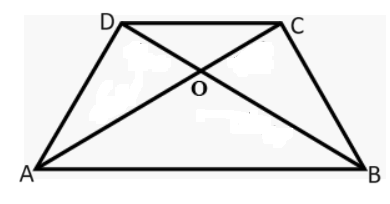Question
AB is parallel to DC in a trapezium ABCD. It is given
that AB > DC and the diagonals AC and BD intersect at O. If AO=3x-15, OB = x +9, OC =x-5 and OD = 5, and x has two values x1 and x2, then the value of (x12 + x2 2 ) is:Solution
 Given the trapezium with AB || DC and the diagonals intersecting at O: OD/OB =OC/OA 3x-15/x+9 =x-5/ 5 (3x-15)5 =(x+9) ×(x-5) 15x-75 =x² + 4x – 45 x² -11x + 30 = Solve the quadratic equation: x1 = -6, x2 =-5 x1 = 6, X2 =5 Now- (x12 + x2 2 ) = 36 + 25 = 61
Given the trapezium with AB || DC and the diagonals intersecting at O: OD/OB =OC/OA 3x-15/x+9 =x-5/ 5 (3x-15)5 =(x+9) ×(x-5) 15x-75 =x² + 4x – 45 x² -11x + 30 = Solve the quadratic equation: x1 = -6, x2 =-5 x1 = 6, X2 =5 Now- (x12 + x2 2 ) = 36 + 25 = 61
Induce
Find out the appropriate word.
Which of the following is an antonym of "vague"?
Choose the correct synonym of the word highlighted in each sentence from the alternatives given below it:
A dozen gentlemen were engage...
Chintzy
Fraudulent - The insurance agent who visited the office yesterday was a 'fraudulent' guy.
Which of the following is a synonym for "plethora"?
The two parties signed a lengthy _________.
It took a lot of time in making both of them come to a comfortable mutual ___________.
Not man...
Select the most appropriate synonym of the given word.
DETAIN
Identify the word that is misspelt.
Relevant for Exams:



